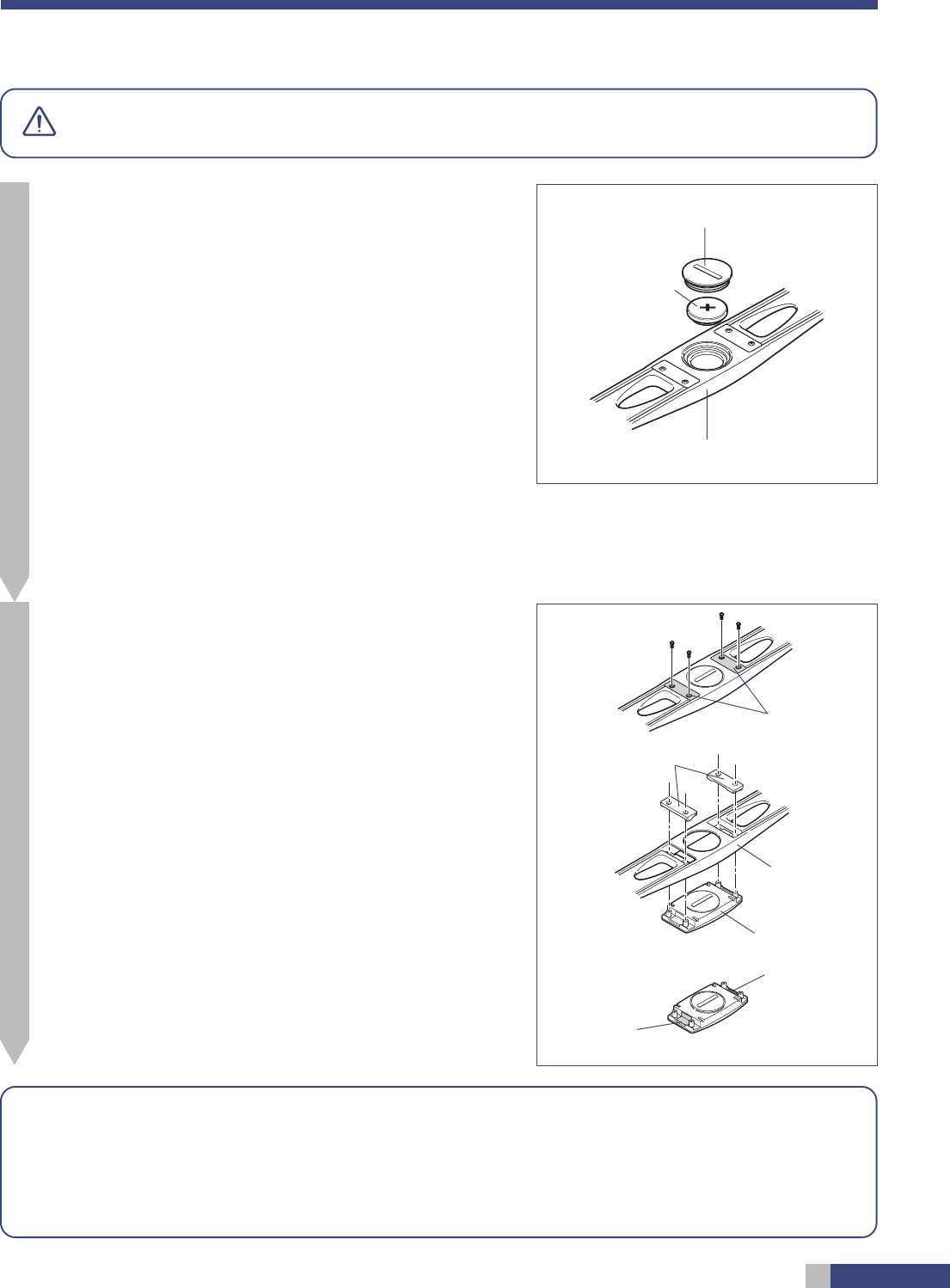
47
Maintenance of the chest-belt heart rate sensor
Replace the battery.
Battery life: approx. 2 years (if used for 1 hour per day)
* The battery life shown in this manual is not definitive and it var-
ies depending on the use environment.
Caution: • The chest-belt heart rate sensor continues to consume
battery while being attached to your body. When you
are not measuring heart rate, remove it from your
chest to save the battery life.
• The battery cover seal is critical for maintaining its
watertight capacity. Check the battery cover for
proper fit and positioning closing.
When the factory loaded battery has worn out, replace it with a new
one according to the following instruction:
1. Remove the battery cover on the back of the transmitter with a
coin.
2. Remove the battery and insert a new lithium battery (CR2032).
Insert as shown in the picture, so that the + side is visible.
3. Close the battery cover tightly.
Replace the electrode belt.
The electrode belt will deteriorate after a long time of use. If there are
cracks in the outer surface, or if measurement errors occur, follow the
procedure below to change the electrode belt.
1. Loosen the 4 screws at the back of the transmitter.
2. Remove the spacers. Separate the transmitter from the electrode
belt.
3. Wipe any dirt off of the two conducting parts of the transmitter,
then insert it into a new electrode belt.
Caution: If there is dirt on the conducting parts, the heart rate
sensor fail to detect the heart rate.
4. Fit the spacers on the right and left sides of the transmitter, and
securely tighten the 4 screws.
Reference: When replacing the electrode belt, also check the
transmitter’s battery life.
Warning
After removing the battery from the sensor, dispose of it properly. Be sure to keep it out of the reach
of small children. If through some accident it is swallowed, contact a physician immediately.
Maintenance of the chest-belt heart rate sensor
For daily maintenance of the sensor:
• If the chest-belt heart rate sensor is dirty, wash with water, or wipe with a diluted neutral detergent and a soft cloth.
Then wipe it dry. Do not use organic solvents such as benzene and alcohol, which will damage the surface.
• The attachment belt will become particularly soaked with sweat. This can be unhygienic if left as is. Clean the belt with
a neutral detergent.
Screws
Spacers
Transmitter
Electrode belt
Spacers
Conducting
part
Conducting
part
Battery cover
Lithium battery
(CR2032)
Chest-belt heart rate sensor


















